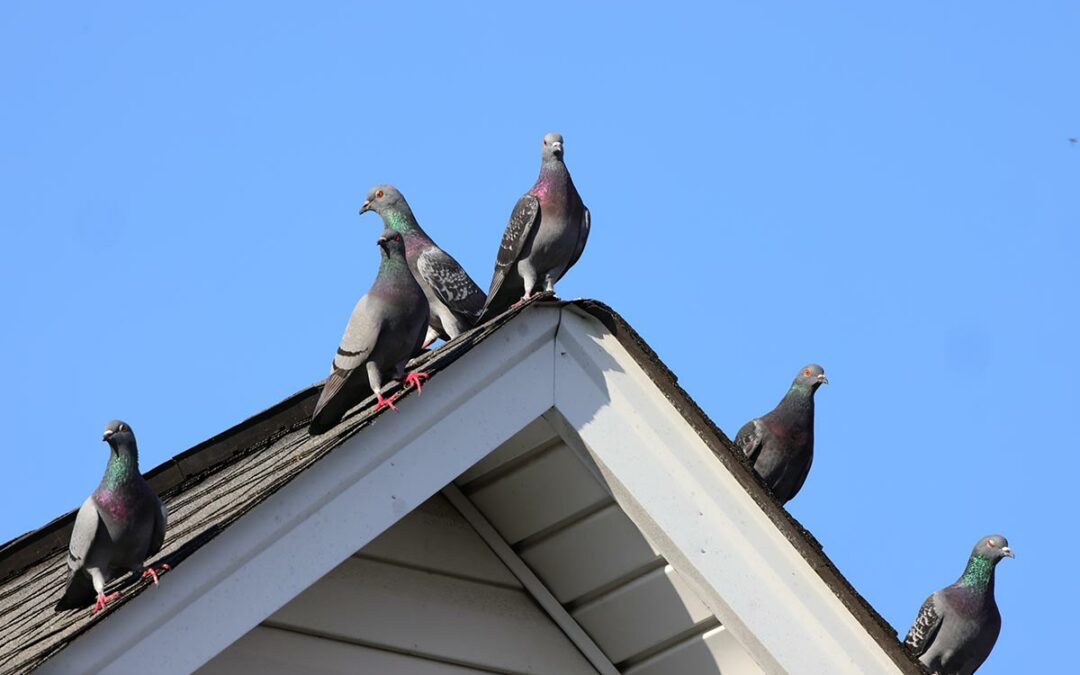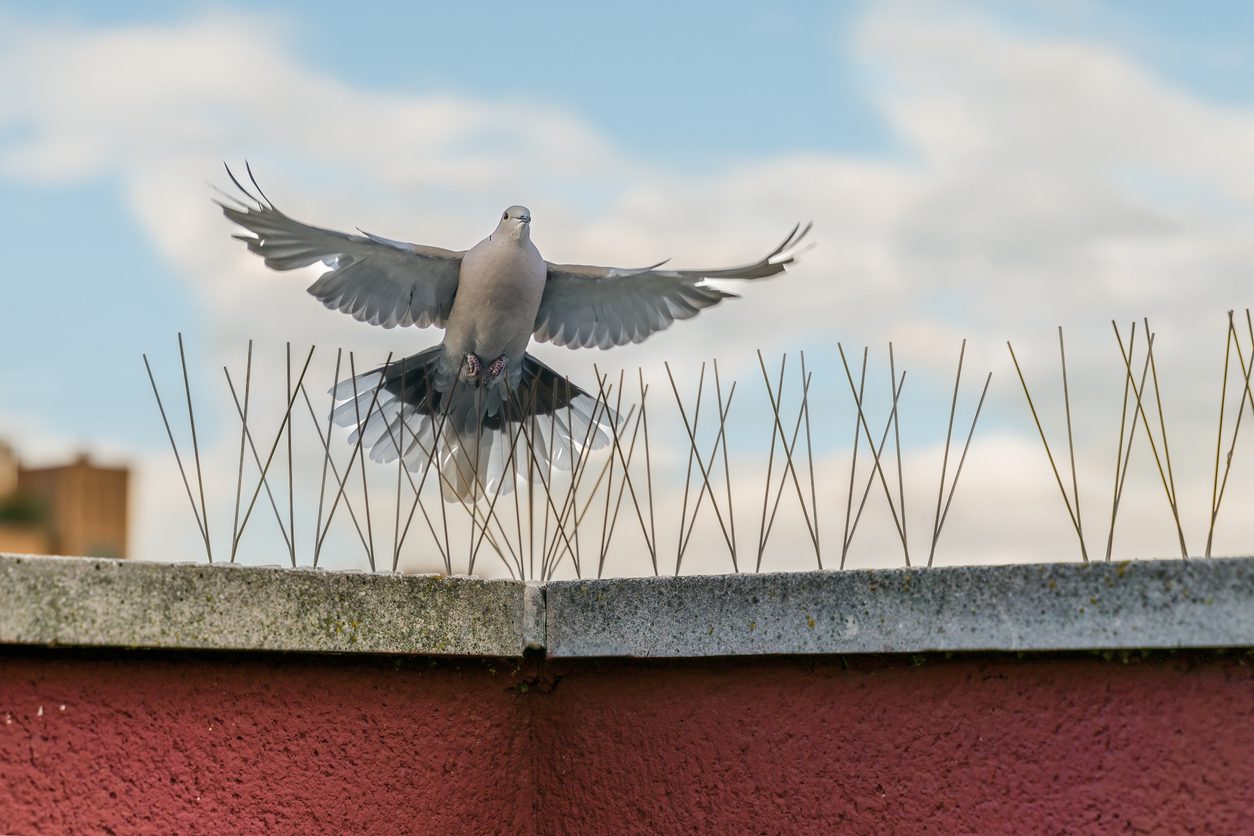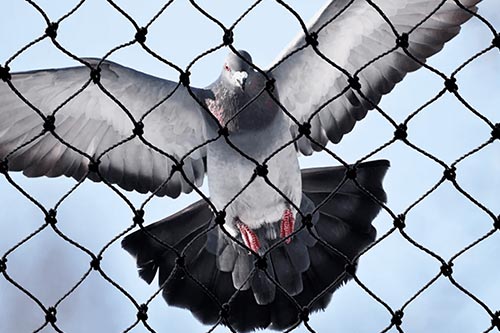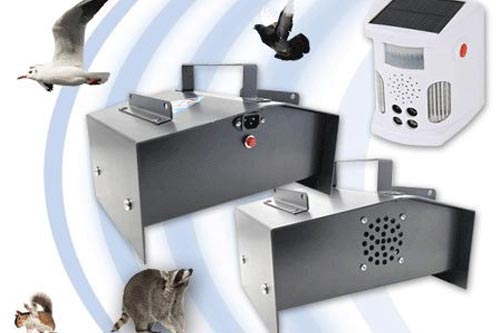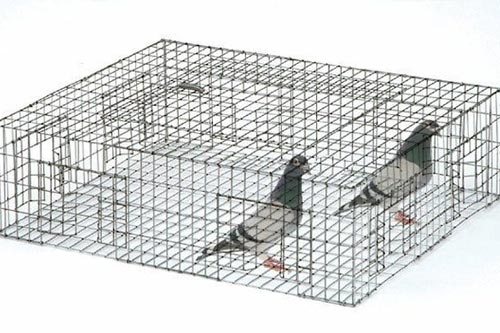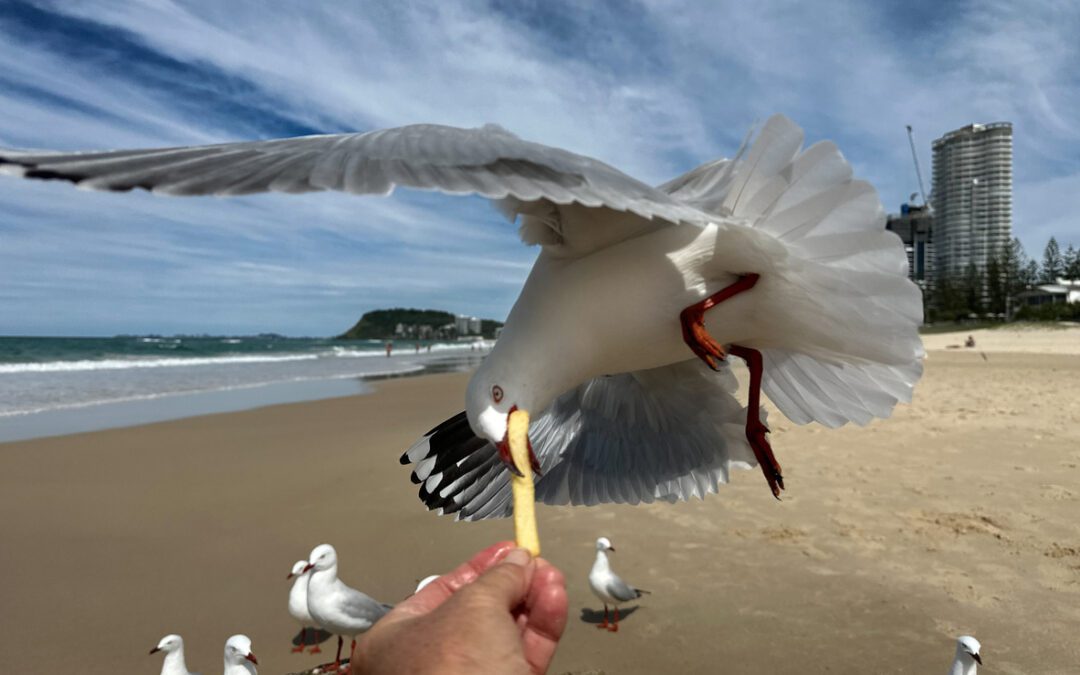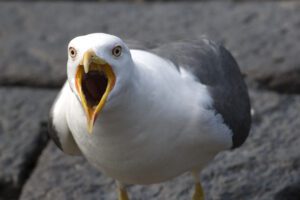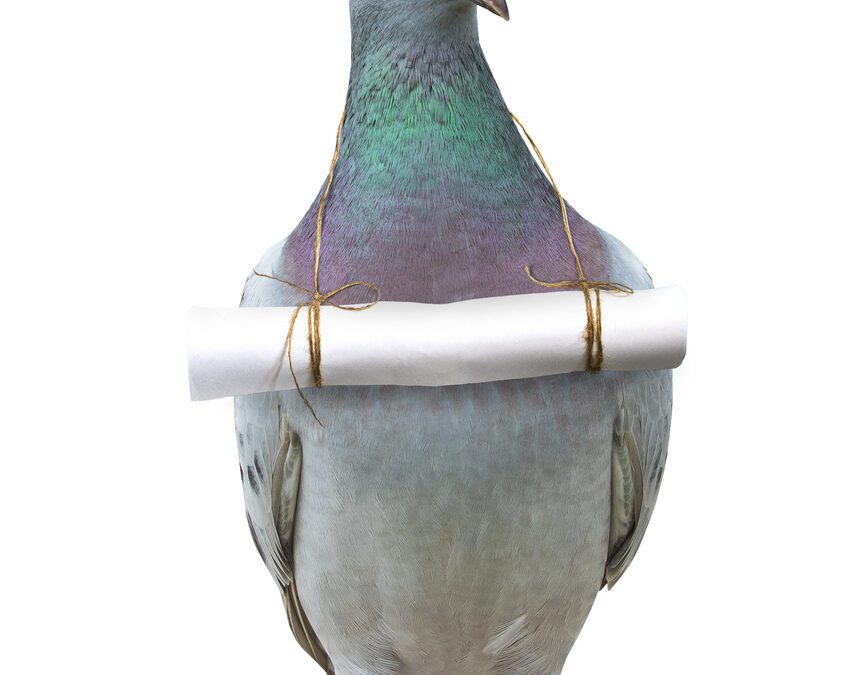
by Pigeon Patrol | Sep 25, 2024 | 4-S Gel Bird repellent, Animal Deterrent Products, Bird Deterrent Products, Bird Netting
Great news. The petition to reduce the use of bird deterrent spikes on buildings has now almost reached 2000 supporters!
I recently saw a poor Herring Gull dangling dead from a roof top caught by a strip of spiked bird deterrents. I felt I had to do something. That’s why I started the petition.
Share the petition (copy and paste) using the link above with friends or more widely on social media. Add a note asking people to please sign and share the petition themselves. If you’ve already been so kind as to have already shared it please consider sharing again. It may find people at a more convenient time. Thank you.
Birds don’t deserve to die because of these ill placed cruel bird deterrent measures. Help stop the killing of endangered birds such as the Herring Gull and other birds who simply want a place to land and thrive.
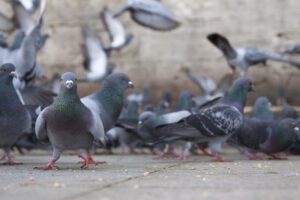
City Pigeons
Rooftop birds like crows and gulls are super bright!
Many birds such as corvids (crow family), pigeons, gull and owls are as cognitively capable as monkeys and even apes. Corvids are particularly smart. Its long been known that they can use tools, recognize faces and even leave gifts for people they like. Birds have smaller neurons (signal pathways) than those in mammalian brains, but have many more information-processing neuronal units in their pallium (layers of grey and white matter covering the cerebrum) than the equivalent-sized mammalian cortices.
A recent study (Nieder et al) published in the journal Science involved studying two carrion crows called Ozzie and Glenn. The study showed that crows are capable of thinking about their own thoughts as they work out problems. This level of self-awareness was previously believed to signify higher intelligence that only humans and perhaps a few other mammals possess. It turns out a crow knows what a crow knows, and so it may be the case that they are sentient beings. The bird pallium has neurons that represent what it perceives – a hallmark of consciousness.
In other words the type of higher intelligence crows exhibit is similar to the way humans solve problems. Corvids it turns out, file away relevant knowledge and then explore these filed banks of ‘known information” to arrive at a thought through cation or solution.
3 things you can also do to help:-
Tweet this update or share the petition on social media using the hashtags Nature, birds, NoToBirdSpikes or LetTheBirdsFly
Use a bird image you have taken and post to social media with the petition link asking people to sign and share (use the same hashtags above). Add your own words saying why you think birds should not get hurt or killed by bird deterrents.
Pigeon Patrol
Pigeon Patrol Products & Services is the leading manufacturer and distributor of bird deterrent (control) products in Canada. Pigeon Patrol products have solved pest bird problems in industrial, commercial, and residential settings since 2000, by using safe and humane bird deterrents with only bird and animal -friendly solutions. At Pigeon Patrol, we manufacture and offer a variety of bird deterrents, ranging from Ultra-flex Bird Spikes with UV protection, Bird Netting, 4-S Bird Gel and the best Ultrasonic and audible sound devices on the market today.
Canada’s top wholesaler for bird deterrent products for twelve consecutive years.
Contact us at 1- 877– 4– NO-BIRD, (604) 585-9279 or visit our website at https://www.pigeonpatrol.ca/
Bird Gone, Pigeon Gone, Pigeon problems, pigeon spikes, 1-877-4NO-BIRD, 4-S Gel, Bird Control, Pigeon Control, bird repellent, Bird Spikes, sonic bird repellent, stainless steel bird spikes, bird spikes Vancouver, Ultra Sonic Bird Control, Bird Netting, Plastic Bird Spikes, Canada bird spike deterrents, Pigeon Pests, B Gone Pigeon, Pigeon Patrol, pest controller, pest control operator, pest control technician, Pigeon Control Products, humane pigeon spikes, pigeon deterrents, pigeon traps, Pigeon repellents, Sound & Laser Deterrents, wildlife control, raccoon, skunk, squirrel deterrent, De-Fence Spikes, Dragons Den, Pigeon, Pigeon Patrol, Pigeons Roosting, Vancouver Pigeon Control, Bird Spikes, Bird Control, Bird Deterrent, Pigeon Deterrent, Surrey Pigeon Control, Pest, Seagull deterrent Vancouver Pigeon Blog, Birds Inside Home De-fence, Pigeon Nesting, Bird Droppings, Pigeon Dropping, woodpecker control, Keep The Birds Away, Birds/rats, seagull, pigeon, woodpecker, dove, sparrow, pidgeon control, pidgeon problem, pidgeon control, flying rats, pigeon Problems, bird netting, bird gel, bird spray, bird nails, bird guard, Pigeon control, Bird deterrents, Pigeon deterrents, Bird control, solutions, Pigeon prevention, Pigeon repellent, Bird proofing, Pest bird management, Pigeon spikes, Bird netting, Humane bird control, Bird exclusion, Urban bird control, Anti-roosting devices, Pigeon removal, Bird barriers
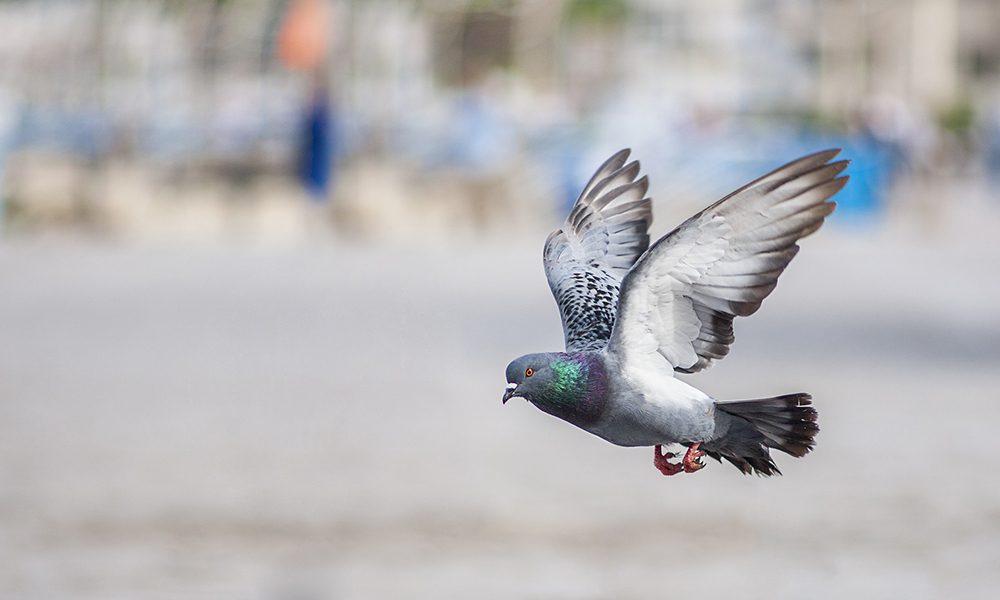
by Pigeon Patrol | Sep 25, 2024 | 4-S Gel Bird repellent, Animal Deterrent Products, Bird Deterrent Products, Bird Netting
A study on a population of pigeons on the University of South Africa’s Muckleneuk campus was conducted over 2 years. Counts were conducted during a baseline year (March 2013–February 2014) to establish the pigeon population index inhabiting the campus buildings, and again in the management year (August 2014–August 2015) once Eagle Eyes™, Fire (Flash) Flags, bird spikes and a combination thereof were implemented on the buildings. An efficacy reduction percentage was determined for each of the control structures. The total pigeon index on the campus declined by 50 % once the control structures were implemented. Control structures; however, differed markedly in efficacy from each other. Whilst bird spikes indicated the highest efficacy at reducing the pigeon population index, seasonality also influenced the efficacy of the control structure. Quantified understanding of the efficacy of pigeon control measures allows urban management to make informed decisions about reducing pigeon populations.
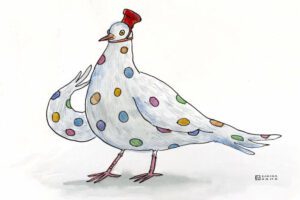
Background
Feral pigeons were first introduced by early Europeans to Southern Africa as a free-flying domesticated species in the seventeenth century (Brooke 1981). However populations both feral (Columba livia Gmelin 1789) and indigenous (speckled pigeon Columba guinea Linnaeus 1758) have since populated urban regions throughout the subcontinent. Urban resources and lifestyles associated with human activity have enabled pigeons to establish populations as a result of the available supply and distribution of food and breeding space (Haag-Wackernagel 1995) resulting in them being considered as the most successful avian coloniser of urban spaces.
Given their long history with humans (Sossinka 1982), it is surprising that pigeons were only first considered to be problematic to the human environment in the 1930s (Sacchi et al. 2002). As pigeon populations increase people start experiencing aesthetic, vital and economic conflicts of interest (Wetherbee et al. 1964) which include the exposure to droppings and debris accumulation (Murton et al. 1972; Fitzwater 1988; Flannery 2009), public health concerns (Hutton 2005; Haag-Wackernagel and Bircher 2009), disturbance (Hutton 2005; Haag-Wackernagel and Geigenfeind 2008), structural deterioration (Hutton 2005; Giunchi et al. 2012) and to a lesser extent, bird strikes (Giunchi et al. 2012). Large flocks of pigeons have been considered to be a nuisance due to their vocalisations (Carle 1959), disturbance from squabs and breeding activities (Hutton 2005), begging (Hutton 2005), potential transmission of pathogens and parasites (Haag-Wackernagel and Moch 2004) and their sheer numbers resulting in an altered enjoyment of private and public spaces (McKeown 2008).
Pigeon control has increased substantially over the decades (Giunchi et al. 2007), with the pigeon control industry booming in the twenty-first century when public views of the birds became increasingly negative and there were calls for the systematic extermination of pigeons in urban environments (Jerolmack 2008). Subsequently, with the increase in pigeon population densities, more pest control strategies have become readily available (Giunchi et al. 2012). These control strategies have been broadly directed at either reducing pigeon numbers through increasing mortality (Haag-Wackernagel 2008; Giunchi et al. 2012), decreasing natality (Giunchi et al. 2007a, b; Haag-Wackernagel 2008; Dobeic et al. 2011) or modifying behaviour through resource management (Haag-Wackernagel 1995; Giunchi et al. 2007a, b; Haag-Wackernagel 2008). Pigeon control is often ad hoc, reactive and unsustainable (Brix et al. 2006), aimed at short-term benefit to enable continued support for pest control businesses (Murton et al. 1972).
Lethal measures have become increasingly controversial and have lost public support (Treves and Noughton-Treves 2005), while non-lethal forms of control are sustainably effective in the long term and are more acceptable to the greater public (Murton et al. 1972; Haag-Wackernagel 1984). This is particularly applicable in light of the recent listing of the feral pigeon as a Category 3 invasive species in South Africa, in terms of the Alien and Invasive Species Regulations, 2014, in terms of the National Environmental Management: Biodiversity Act of 2004 (Act 10 of 2004) of South Africa which permits the legal control of feral pigeons in urban areas (Department of Environmental Affairs 2015; SA 2015: 493).
Non-lethal pigeon control strategies are generally directed at the pigeons’ visual, auditory and tactile senses; however, habitat modification and reduction can also be achieved by physical barriers. According to Jacobs (1992), pigeons are able to see in colour and ultra-violet spectrums to aid foraging, signalling and sex recognition, and thus visual control strategies aimed at irritating or impersonating danger have varying colour spectrums. These include decoys (Harris and Davies 1998), moving lights and objects, lasers (Blackwell et al. 2002), threatening images and reflective items. Hutton and Dobson (1993) and Hutton (2005) have both found that visual deterrents have their limitations and are generally ineffective due to habituation by the pigeons.
Habitat modification through the placement of physical barriers preventing pigeons from perching on buildings and other urban structures are used widely due to their durability and acceptance by the public (Giunchi et al. 2012). Haag-Wackernagel and Geigenfeind (2008) suggest that through the restriction of entrance dimensions and the exaggeration of sloping surfaces, access prevention to ideal roosting and nesting sites can be achieved. Anti-perching devices such as sprung wires (Hutton 2005) and bird spikes (Seamans et al. 2007), or the total exclusion through netting (Hutton and Dobson 1993) can be used to deter pigeons from making use of buildings in urban environments. Cost may be a limiting factor in their implementation, and the effectiveness of these barriers can depreciate over time if these devices are not maintained (Hutton 2005).
Nevertheless, every structure and strategy has its advantages and disadvantages (Hutton and Dobson 1993). However, regardless of the control method used, if the benefits of the resources for the pigeons outweigh the costs of enduring device-related discomfort, pigeons will override any system (Haag-Wackernagel and Geigenfeind 2008). Research suggests that science seems to be lacking in quantitative reviews of various control methods and their effectiveness at reducing pigeon populations (Buijs and Van Wijnen 2001; Fukuda et al. 2008). The level of pigeon reduction of such devices needs to be quantified so that urban management can make informed decisions about the cost effectiveness and efficacy at reducing pigeon populations with regard to non-lethal control methods.
The University of South Africa’s (Unisa) Muckleneuk campus in Pretoria is host to a large number of pigeons. The birds gain access into the buildings through open access points such as loose exterior ceiling boards and open electrical and air conditioning ducts (cabling ducts) positioned on the exterior of the buildings. This easy access increases the number of protected and sheltered breeding and roosting sites available. It has also increased health concerns relating to the build-up of their faeces and associated fungi, nest mites and bird lice which have been reported to infest the offices and affect the staff working in certain buildings on campus. Faeces and accumulated nesting material build-up on the various external structures of the campus buildings have become an issue of concern. According to Ntshoe (pers. comm. 2013), large financial investments have been made in order to manage the birds and their associated problems on an ad hoc and reactive basis.
This paper evaluates non-lethal humane pigeon control strategies with particular focus on visual deterrents and physical barriers on the Unisa Muckleneuk campus and will examine the following objectives and null hypothesis.
Objectives
To determine if the control structures have decreased the pigeon population index on campus.
To determine if pigeons will move from a building with control structures to an untreated building.
To establish if seasonality influences the efficacy of control structures.
To validate the industry percentage reduction claims with regard to control structures.
To evaluate the efficacy percentage reduction of Eagle Eyes™, Fire Flags, bird spikes and a combination thereof on the pigeon population index.
Null hypothesis
Control structures, namely Eagle Eyes™, Fire Flags, bird spikes and combinations of these, will not significantly differ from each other in efficacy at reducing the pigeon population index.
Study area
Unisa (−25.76776, 28.199158) is situated on top of a hill (1411.19 m above sea level) near the central business district of Pretoria in Gauteng in South Africa. The city is surrounded by the Magaliesburg mountain range in the transitional zone between the Central Bushveld and Moist Highveld Grassland vegetation types (Kruger 2004). The city has a moderate, warm temperate climate with an annual minimum and maximum temperature average of 13 °C (June) and 24 °C (January) respectively which was measured during the course of the study. According to the South African Weather Service (2010), precipitation averages 677 mm, while relative humidity ranges between 44 and 75 % annually. Pretoria experiences 3 254 h of sunshine a year with an average of 2.4–2.7 days of cloud cover recorded annually (South African Weather Service 2010). The Pretoria region within a 20 km radius of Unisa includes commercial, industrial, suburban and rural areas, with farming and crop (maize, soya, sorghum and sunflowers) production in the surrounding districts (Collett 2015).
The campus is located within a green belt which includes the surrounding Groenkloof Nature Reserve, Fountains Valley, Apies River, Voortrekker Monument and Freedom Park. Various small mammals and bird species inhabit the university’s grounds. These include avian migrants and small raptors.
Established in 1972, the Muckleneuk campus consists of seven administrative and academic buildings; however, for the purpose of this study only the following five of the seven buildings were investigated as part of the pigeon research: Theo van Wijk building, OR Tambo building, AJH van der Walt building, Cas van Vuuren building and Samuel Pauw building (Fig. 1). Each building is unique in its design, providing various roosting and nesting site possibilities for the pigeon population index on the campus. Academic and administrative offices are positioned lengthwise along the buildings and face out onto balconies.
Theo van Wijk, the largest building positioned on the far western side of the campus, has 11 levels uniform in design with balconies and exterior cabling ducts running the length of the building. Due to its y-shape, the building offers two north facing and two south facing aspects. The Philadelphia cafeteria is positioned on the third floor, which includes an extensive catering balcony.
The AJH van der Walt building is positioned on the northern side of the campus facing an undeveloped vegetated mound which meets the campus’ northern boundary. All seven levels are continuous in balcony and cabling ducts design.
To the east of the campus is the library, housed in the Samuel Pauw building, roughly hexagonal in shape with eight levels and continual balconies. Beyond this building towards the campus boundary in the east is parking space and natural vegetation.
OR Tambo, the administrative building, is positioned to the south. It is the tallest building on campus with 14 levels. Balconies and cabling ducts provide uniform exterior structural design, with the exception of the Good Hope cafeteria and balcony positioned on level four.
Adjacent to the OR Tambo building is the Cas van Vuuren building with seven levels and no exterior cabling ducts positioned above its balconies. Natural areas extend to the southern and south-western boundaries.
A characteristic of all the buildings are the loose, broken or open exterior ceiling boards and cabling ducts which provide additional roosting and breeding space for the pigeon population index on campus.
Methods
This study took place over two years. During the first year data was collected for a full year from the beginning of March 2013 to the end of February 2014 to provide a baseline year to determine the index of the pigeon population inhabiting the buildings on the Muckleneuk campus. This data was used to determine the efficacy of the control measures implemented on the campus buildings during the second year (August 2014–August 2015).
For each year adult and juvenile pigeons were counted during the pigeons’ bimodal foraging activity periods, which have been recorded to peak in the morning and afternoon (Rose et al. 2006; Soldatini et al. 2006). These counts took place early morning during the first 2 h after sunrise and again in the evening during the last 2 h before sunset, once a week for 52 weeks. If the particular chosen day for counting experienced extreme weather conditions, then the next consecutive day with fine weather was chosen and documented.
The observer maintained a standard designated route in a west to east direction, counting each of the campus’ five buildings during the course of the research period. Observations were aided binoculars, digital camera and dictaphone, later transcribed onto data sheets. Double counts of individuals taking off and perching on the same building was taken into consideration and avoided. As the pigeons were wild and free roaming, the exact number of pigeons on campus could not be determined. An increase or decrease in the number of pigeons counted was in essence a reflection of the unknown population size and directly correlated to an increase or decrease in pigeon presence on campus (Gregory et al. 2005). Presence was represented as an index to monitor the extent of the increases or decreases as actual numbers could not be attained through the methodology implemented. As the index reflects a portion of the pigeon population, a portion which may be change over time, methodology was therefore standardised to mitigate variability (Johnson 2008). The paper will therefore refer to indices to convey the extent of the pigeon presence, and its changes over time. The results of the baseline year were therefore interpreted as an index of pigeon population size. The use of the term ‘population’ in this study does not refer to a biological population as a demographic unit but rather as a population index indicative of the census technique employed.
During the second year, once the baseline year was completed, various pigeon control structures were installed on four buildings (Theo van Wijk building, OR Tambo building, Cas van Vuuren building and Samuel Pauw building) for the management year (August 2014–August 2015, 52 weeks). One of the buildings, AJH van der Walt building, was used as a control building without any pigeon control structures or strategies to determine whether pigeons deterred from surrounding buildings with control structures simply moved to an untreated building as suggested by Mooallem (2006).
Pigeon control structures chosen for this study included Eagle Eyes™ (visual deterrent) which are rotating prisms that reflect light within the ultra violet spectrum designed to interfere with the pigeons’ line of flight as the light causes a distraction (Eagle Eye 2015) (Fig. 2); Fire (Flash) Flags (visual deterrent), made from reflective gold and silver plastic, are designed to move with the wind to give the impression of fire and danger (Eagle Eye 2015) (Fig. 3); bird spikes (physical barrier), which are dual-pronged, stainless steel spikes continuously placed along the ledge of a building aimed at preventing pigeons from perching (Fig. 4); and the combination of the above mentioned control structures (Eagle Eyes™, Fire Flags and bird spikes) recommended by a well-known pest control company in South Africa for optimal pigeon deterrence.
The pest control company marketing and selling the pigeon control structures identified the optimal placement of each control structure tested in this study per building on campus to ensure that each building was suitably covered by the chosen structure for pigeon control purposes.
The largest building, Theo van Wijk building, is positioned on the far western side of the campus. Due to its extensive size and y-shape creating two north and two south facing aspects, Eagle Eye™ units were chosen. Sunlight reflected by the 36 units was able to cover a greater surface area relative to the other control structures, and its proximity to other buildings contributed to the control structure choice as light from the units would affect surrounding buildings thus influencing their respective control strategies. Units were placed on each balcony of the 11 stories and at regular intervals along the roof (north and south facing).
OR Tambo, the tallest building with 14 levels, was selected to test the Fire Flags due to the updraft of wind that is experienced at such high altitudes. Eighty units were placed along the levels (north and south facing).
The Cas van Vuuren building was identified for use of bird spikes as the building does not have the exterior electrical and air conditioning ducts (cabling ducts) which are positioned just below the balcony ceilings above the office windows of other buildings on campus. These ducts provide ideal sites for pigeons to roost and nest on. A single continuous strand of bird spikes (1720 m) was positioned along the length of the balcony ledge on all seven levels (north and south facing).
The university’s library, Samuel Pauw, hexagonal in shape, was chosen for the implementation of the control structure combination recommended by the pest control company. This included six Eagle eye™ units, 12 Fire Flag units and 2790 m of bird spikes applied to the eight levels of the building.
The same methodology used in year one was applied in the second year to determine the efficacy of the control structures on the pigeon population index. Arithmetic means and standard errors of the monthly pigeon population indices are depicted graphically over the course of the two years. Pigeon population index and efficacy rate was determined by calculating the percentage change in the number of counts of pigeons between the baseline year and management year in which the control structures were implemented. This indicated the reduction in percentage of each control structure on the pigeon population index.
To test whether or not there was a difference in the mean efficacy percentages between the different control structures a one-way ANOVA was used. Where significant differences between the control structures were observed, Bonferroni post hoc tests were employed to determine which of the control structures differed significantly from each other in one-to-one comparisons.
Pigeon Patrol
Pigeon Patrol Products & Services is the leading manufacturer and distributor of bird deterrent (control) products in Canada. Pigeon Patrol products have solved pest bird problems in industrial, commercial, and residential settings since 2000, by using safe and humane bird deterrents with only bird and animal -friendly solutions. At Pigeon Patrol, we manufacture and offer a variety of bird deterrents, ranging from Ultra-flex Bird Spikes with UV protection, Bird Netting, 4-S Bird Gel and the best Ultrasonic and audible sound devices on the market today.
Canada’s top wholesaler for bird deterrent products for twelve consecutive years.
Contact us at 1- 877– 4– NO-BIRD, (604) 585-9279 or visit our website at https://www.pigeonpatrol.ca/
Bird Gone, Pigeon Gone, Pigeon problems, pigeon spikes, 1-877-4NO-BIRD, 4-S Gel, Bird Control, Pigeon Control, bird repellent, Bird Spikes, sonic bird repellent, stainless steel bird spikes, bird spikes Vancouver, Ultra Sonic Bird Control, Bird Netting, Plastic Bird Spikes, Canada bird spike deterrents, Pigeon Pests, B Gone Pigeon, Pigeon Patrol, pest controller, pest control operator, pest control technician, Pigeon Control Products, humane pigeon spikes, pigeon deterrents, pigeon traps, Pigeon repellents, Sound & Laser Deterrents, wildlife control, raccoon, skunk, squirrel deterrent, De-Fence Spikes, Dragons Den, Pigeon, Pigeon Patrol, Pigeons Roosting, Vancouver Pigeon Control, Bird Spikes, Bird Control, Bird Deterrent, Pigeon Deterrent, Surrey Pigeon Control, Pest, Seagull deterrent Vancouver Pigeon Blog, Birds Inside Home De-fence, Pigeon Nesting, Bird Droppings, Pigeon Dropping, woodpecker control, Keep The Birds Away, Birds/rats, seagull, pigeon, woodpecker, dove, sparrow, pidgeon control, pidgeon problem, pidgeon control, flying rats, pigeon Problems, bird netting, bird gel, bird spray, bird nails, bird guard, Pigeon control, Bird deterrents, Pigeon deterrents, Bird control, solutions, Pigeon prevention, Pigeon repellent, Bird proofing, Pest bird management, Pigeon spikes, Bird netting, Humane bird control, Bird exclusion, Urban bird control, Anti-roosting devices, Pigeon removal, Bird barriers
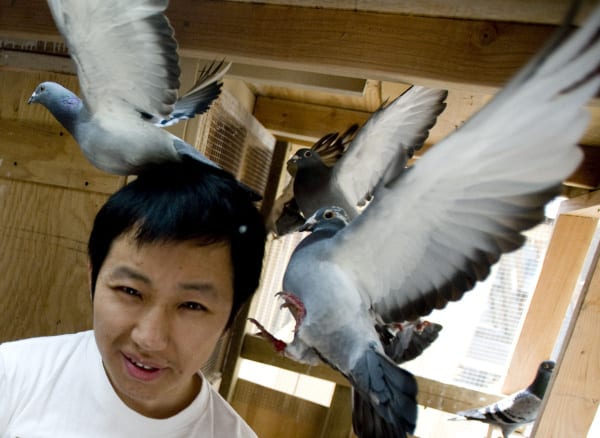
by Pigeon Patrol | Nov 7, 2023 | 4-S Gel Bird repellent, Animal Deterrent Products, history of pigeons, MBCA, pet bird, Pigeon Control, Pigeon Droppings, Pigeon Patrol's Services
There are several species of birds that choose to build their nests around human habitation such as houses and sheds. Sometimes this can look messy and cause problems such as build up of droppings under the nest. We are often asked how to deal with this problem or whether the nest can be moved to another location.
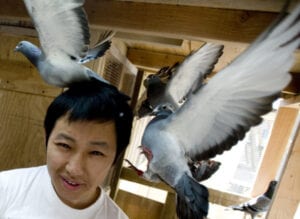
The first thing to do is to find out what species of bird is building the nest. Have a good look at them and see if you can identify the species. Understanding more about the birds themselves may help you accept their presence around your home – you might even find that you have a rare and interesting bird in your garden.
It is very difficult to relocate nests without disturbing birds, so we don’t recommend moving nests unless this can be done before any eggs have been laid. If the birds are still in the process of building the nest then you can destroy the nest and obstruct the area so they cannot build another nest in the same place.
Alternatively, you could let the birds build the nest and live with them until their babies have fledged. It can be fascinating to watch the birds sitting on the nest, the eggs hatch and then the young grow up and fledge. Baby birds grow at a very rapid rate so they will only stay in the nest (and around your home) for a short period of time. The babies then tend to fly away to find their own mates. The parents will often move on to another location as well.
You might then like to make the area less attractive to nesting birds before next spring/summer by putting up wire or blocking access to the area where the nest was.
Source
Pigeon Patrol
Pigeon Patrol Products & Services is the leading manufacturer and distributor of bird deterrent (control) products in Canada. Pigeon Patrol products have solved pest bird problems in industrial, commercial, and residential settings since 2000, by using safe and humane bird deterrents with only bird and animal -friendly solutions. At Pigeon Patrol, we manufacture and offer a variety of bird deterrents, ranging from Ultra-flex Bird Spikes with UV protection, Bird Netting, 4-S Bird Gel and the best Ultrasonic and audible sound devices on the market today.
Canada’s top wholesaler for bird deterrent products for twelve consecutive years.
Contact us at 1- 877– 4– NO-BIRD, (604) 585-9279 or visit our website at https://www.pigeonpatrol.ca/
Bird Gone, Pigeon Gone, Pigeon problems, pigeon spikes, 1-877-4NO-BIRD, 4-S Gel, Bird Control, Pigeon Control, bird repellent, Bird Spikes, sonic bird repellent, stainless steel bird spikes, bird spikes Vancouver, Ultra Sonic Bird Control, Bird Netting, Plastic Bird Spikes, Canada bird spike deterrents, Pigeon Pests, B Gone Pigeon, Pigeon Patrol, pest controller, pest control operator, pest control technician, Pigeon Control Products, humane pigeon spikes, pigeon deterrents, pigeon traps, Pigeon repellents, Sound & Laser Deterrents, wildlife control, raccoon, skunk, squirrel deterrent, De-Fence Spikes, Dragons Den, Pigeon, Pigeon Patrol, Pigeons Roosting, Vancouver Pigeon Control, Bird Spikes, Bird Control, Bird Deterrent, Pigeon Deterrent, Surrey Pigeon Control, Pest, Seagull deterrent Vancouver Pigeon Blog, Birds Inside Home De-fence, Pigeon Nesting, Bird Droppings, Pigeon Dropping, woodpecker control, Keep The Birds Away, Birds/rats, seagull, pigeon, woodpecker, dove, sparrow, pidgeon control, pidgeon problem, pidgeon control, flying rats, pigeon Problems, bird netting, bird gel, bird spray, bird nails, bird guard, Pigeon control, Bird deterrents, Pigeon deterrents, Bird control, solutions, Pigeon prevention, Pigeon repellent, Bird proofing, Pest bird management, Pigeon spikes, Bird netting, Humane bird control, Bird exclusion, Urban bird control, Anti-roosting devices, Pigeon removal, Bird barriers
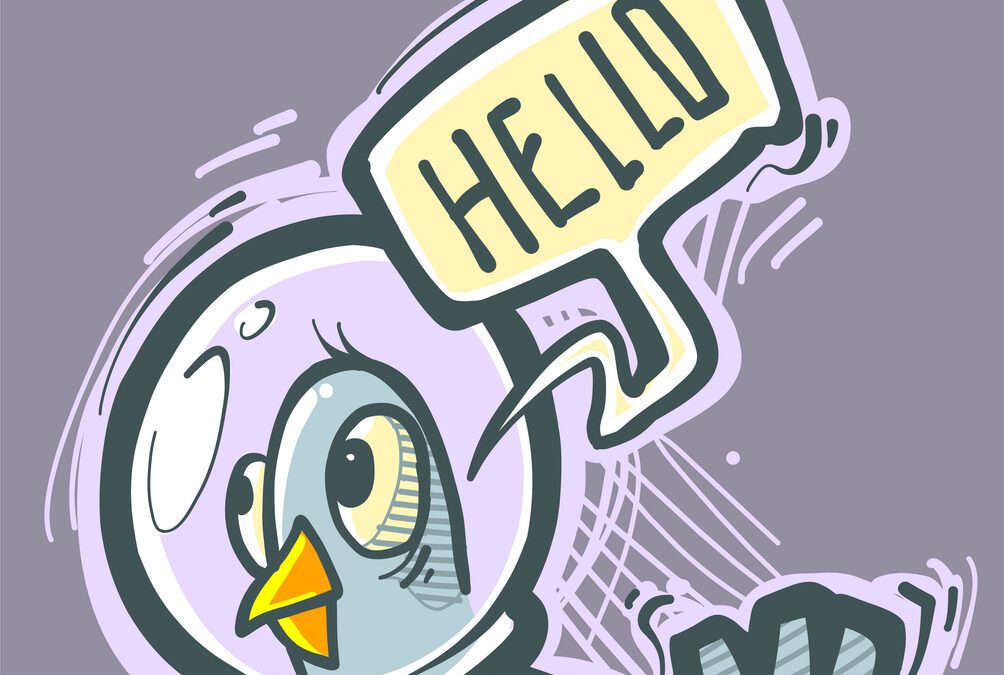
by Pigeon Patrol | Nov 7, 2023 | 4-S Gel Bird repellent, Animal Deterrent Products, Bird Deterrent Products, Bird Law, Bird Netting, Bird Spikes
PROBLEMS OF PIGEON HABITS AND HABITATS
Pigeons aren’t menacing to humans, but they can be problematic when they build a nest inside a structure. Although most people love to feed pigeons in the park, they aren’t so happy with the negative effects. The same place where pigeons roost becomes a space for pigeon droppings. These droppings are acidic and cause a lot of damage to property. Eaves and gutters can get clogged, which leaves your home vulnerable to water damage and leaks. Humans can also potentially slip and fall on the mess that accumulates. In addition, pigeon droppings can carry disease and parasites. Pigeons damage plants and crops in search of food. They don’t have natural predators, so it can be difficult to control their population. A group of pigeons can be very noisy, especially when dealing with the sound every day, 24 hours a day. Movies may romanticize the cooing that pigeons make, but when you’re woken up on a lazy Sunday morning, it’s not so idealistic. Pigeons may also bring lice, ticks, and other insects to your home through their nest.

HOW TO GET RID OF PIGEONS
If you have a flock of pigeons living in your home or business, you will need to take multiple steps to eliminate the problem. Modern pigeons may not be used as messengers any longer, but they do have a strong homing instinct. They cannot simply be relocated to remove them. Removal should be performed by a professional wildlife service that can employ countermeasures that prevent pigeons from returning to the nest.
- The nest area will need to be cleaned and disinfected.
- All food and water sources will have to be removed.
- A prevention plan will need to be established.
- Entry points of the home must be sealed off properly.
One important consideration in removing birds is to know any laws that pertain. In some jurisdictions, it is illegal to remove birds and bird’s nests with eggs, even if the birds are a nuisance. Depending on where you live, you may need to work with a wildlife agency to remove the pigeons, which is why we always recommend calling a professional.
HOW TO KEEP PIGEONS AWAY FROM YOUR HOME
Once you’ve removed the pigeons, prevention is key. The goal is to make your home as unappealing to birds as possible. Installing physical barriers, such as screens or netting, can prevent pigeons from roosting, but it’s not always practical in certain locations. There are other options that deter pigeons from nesting, such as spikes, audio, or taste deterrents and bird wire. In some cases, it’s enough to install reflective surfaces or metal surfaces that reflect sunlight. These deterrents affect a pigeon’s ability to see and keep them away from your garden or home. Keep in mind that you may want to deter pigeons from roosting in your garden without repelling beneficial wildlife, such as hummingbirds or bees. Professional wildlife removal services can help you get rid of pests without harming other wildlife. Don’t try to deal with a pigeon nest on your own. Professional wildlife control services in North York are available to keep your family safe and to prevent re-infestation. Contact Skedaddle for safe, effective, and humane wildlife removal.
Pigeon Patrol
Pigeon Patrol Products & Services is the leading manufacturer and distributor of bird deterrent (control) products in Canada. Pigeon Patrol products have solved pest bird problems in industrial, commercial, and residential settings since 2000, by using safe and humane bird deterrents with only bird and animal -friendly solutions. At Pigeon Patrol, we manufacture and offer a variety of bird deterrents, ranging from Ultra-flex Bird Spikes with UV protection, Bird Netting, 4-S Bird Gel and the best Ultrasonic and audible sound devices on the market today.
Canada’s top wholesaler for bird deterrent products for twelve consecutive years.
Contact us at 1- 877– 4– NO-BIRD, (604) 585-9279 or visit our website at https://www.pigeonpatrol.ca/
Bird Gone, Pigeon Gone, Pigeon problems, pigeon spikes, 1-877-4NO-BIRD, 4-S Gel, Bird Control, Pigeon Control, bird repellent, Bird Spikes, sonic bird repellent, stainless steel bird spikes, bird spikes Vancouver, Ultra Sonic Bird Control, Bird Netting, Plastic Bird Spikes, Canada bird spike deterrents, Pigeon Pests, B Gone Pigeon, Pigeon Patrol, pest controller, pest control operator, pest control technician, Pigeon Control Products, humane pigeon spikes, pigeon deterrents, pigeon traps, Pigeon repellents, Sound & Laser Deterrents, wildlife control, raccoon, skunk, squirrel deterrent, De-Fence Spikes, Dragons Den, Pigeon, Pigeon Patrol, Pigeons Roosting, Vancouver Pigeon Control, Bird Spikes, Bird Control, Bird Deterrent, Pigeon Deterrent, Surrey Pigeon Control, Pest, Seagull deterrent Vancouver Pigeon Blog, Birds Inside Home De-fence, Pigeon Nesting, Bird Droppings, Pigeon Dropping, woodpecker control, Keep The Birds Away, Birds/rats, seagull, pigeon, woodpecker, dove, sparrow, pidgeon control, pidgeon problem, pidgeon control, flying rats, pigeon Problems, bird netting, bird gel, bird spray, bird nails, bird guard, Pigeon control, Bird deterrents, Pigeon deterrents, Bird control, solutions, Pigeon prevention, Pigeon repellent, Bird proofing, Pest bird management, Pigeon spikes, Bird netting, Humane bird control, Bird exclusion, Urban bird control, Anti-roosting devices, Pigeon removal, Bird barriers

